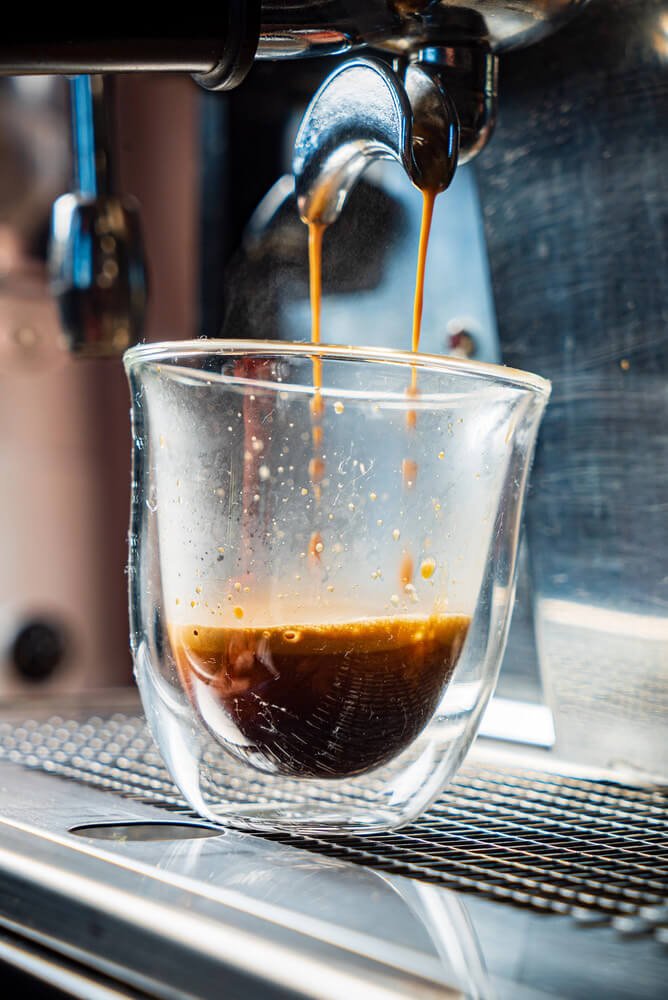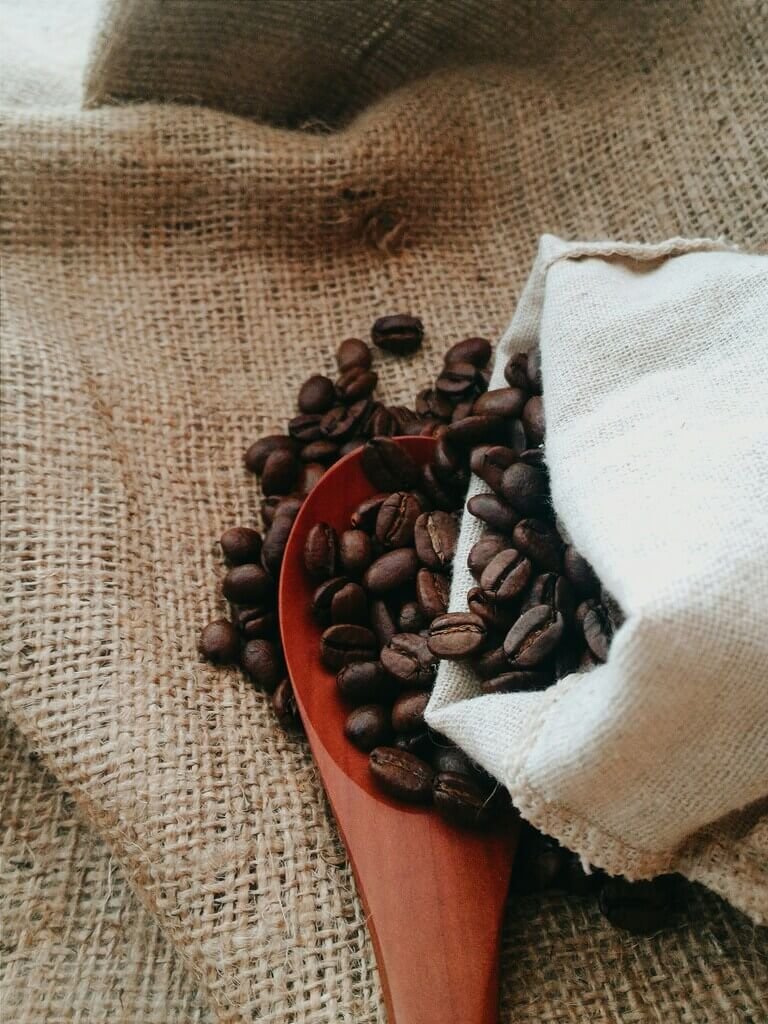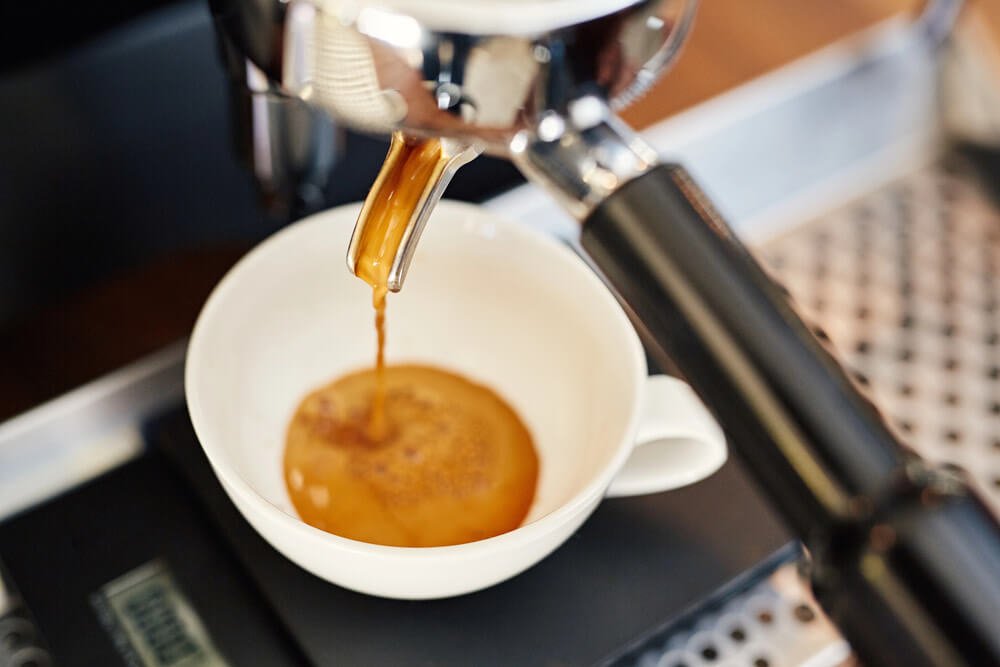
Espresso is a powerful, concentrated shot that packs a punch both in flavor and caffeine. But how long does espresso really last?
The short answer to “How long does espresso last?” is that it’s best consumed immediately after brewing. However, the answer is more complex, as various factors like storage methods and environmental conditions significantly affect its longevity.
I’ll go into more detail about how to store your espresso and what to expect from its shelf life under different conditions. Understanding these aspects will help you enjoy the best espresso experience possible.
How Long Does Espresso Last?
Espresso lasts for about 1 hour at room temperature before it starts to lose its optimal flavor and aroma. If refrigerated, it can last up to 24 hours, though the quality will diminish.
For longer storage, you can freeze espresso for several weeks, but this might alter its taste and texture. To fully enjoy its rich, complex flavors, it’s best to consume espresso immediately after brewing.

What Factors Affect Espresso Freshness?
Several factors influence the freshness of your espresso, including the type of beans, storage methods, and the grind size. Here’s a closer look at these crucial elements.
Whole Beans
Whole beans have a longer shelf life compared to pre-ground coffee. They keep the essential oils and flavors intact until you’re ready to brew.
Using whole beans also allows you to grind them just before brewing, ensuring you get the freshest shot of espresso possible.
- Whole Bean Coffee: Whole beans are preferred by coffee lovers because they maintain their flavor and aroma longer. Freshly ground coffee from whole beans produces a more vibrant and robust espresso shot.
- Proper Storage: Store whole beans in an airtight container to protect them from moisture, air, and light. This helps in preserving their freshness for a longer period.
Fresh Beans
Using freshly roasted beans improves the taste and quality of your espresso. Look for beans with a recent roast date to ensure you’re getting the best possible flavor.
- Roast Date: The roast date is crucial as beans are best consumed within a few weeks of roasting. Check the roast date on the packaging and choose the freshest beans available.
- Fresh Coffee: Freshly roasted beans provide a richer and more complex flavor profile. The fresher the beans, the better the espresso.
Coffee Grounds
Once ground, coffee starts losing its flavor quickly due to exposure to air. It’s best to grind only what you need for immediate use.
- Grind Size: The grind size can impact the flavor and extraction of the espresso. A finer grind is typically used for espresso to maximize the extraction of flavors.
- Coffee Grounds: Ground coffee has a larger surface area exposed to air, which accelerates the loss of flavor. For the best espresso, grind your coffee beans just before brewing.
What’s the Best Storage for Coffee Beans?

The best storage for coffee beans is in an airtight container.
Store your coffee in an airtight container to protect it from moisture, air, and light. This helps in preserving its flavor for a longer time.
An airtight container minimizes exposure to oxygen, which can degrade the quality of the beans.
Vacuum-sealed bags or containers are ideal for extending the shelf life of your coffee. They provide an extra layer of protection against air and moisture.
Also, always check the roast date. Coffee is best consumed within a few weeks of roasting to enjoy its peak flavor.
While coffee doesn’t spoil like perishable food products, its flavor diminishes over time. Use the roast date as a guide for freshness rather than the expiration date.
How Long Does Espresso Last at Room Temperature?

Espresso’s shelf life at room temperature is limited. Ideally, it should be consumed immediately after brewing for the best taste.
Leaving your espresso at room temperature for too long is not advisable. The general rule is to drink it within a few hours to enjoy its optimal flavor and aroma.
- Leftover Coffee: If you have leftover espresso, it’s best to consume it within 24 hours. Beyond this point, it starts losing its quality and taste.
- General Rule: As a rule of thumb, brewed espresso is best consumed fresh. If you must store it, keep it in an airtight container to reduce oxidation.
Can Espresso Be Stored in the Refrigerator?
Yes, espresso can be stored in the refrigerator to extend its shelf life, but with some caveats.
Refrigeration slows down the degradation process, helping your espresso last a bit longer. However, it’s essential to store it properly to preserve its flavor and aroma.
Storing espresso in the fridge is useful if you plan to use it for cold coffee drinks like iced coffee or cold brew concentrate. Refrigerated espresso is a convenient base for these beverages, as it offers a quick and easy way to prepare your favorite cold coffee drinks.
Pour leftover espresso into an ice cube tray and freeze it. Espresso ice cubes can be used later in iced coffee or cocktails, as they preserve some of the original flavor.
This is particularly useful for making a quick iced latte or adding a coffee kick to your favorite cold drink without diluting it with regular ice.
How Does Freezing Affect Espresso?
Freezing can significantly extend the shelf life of your espresso and make it last for weeks or even months. This method is ideal if you have made too much espresso or want to prepare it in advance for later use.
- Cold Brew Concentrate: You can freeze espresso to use later in cold brew concentrate or other cold coffee drinks. Freezing cold brew concentrate in small portions can make it easier to mix up a quick drink without waiting for a fresh batch to brew.
- Long Espresso: While freezing helps preserve the coffee, it might affect the taste and texture slightly. The freezing and thawing process can cause some loss of flavor and changes in the mouthfeel. To mitigate these effects, thaw the espresso properly and use it in cold drinks to mask any minor flavor changes. Adding milk, syrups, or other flavorings can also help enhance the taste.
Best Practices for Freezing Espresso
- Use an Airtight Container: Store your espresso in an airtight container before freezing to prevent freezer burn and absorb unwanted odors. This helps maintain the coffee’s original flavor.
- Portion Control: Freeze espresso in small portions, such as ice cube trays, to make it easy to use only what you need without thawing the entire batch.
- Label and Date: Always label your containers with the date so you can keep track of how long they’ve been stored. Use the oldest espresso first to ensure you’re consuming it at its best quality.
- Thaw Slowly: Thaw the espresso slowly in the refrigerator to preserve its flavor and texture as much as possible. Avoid microwaving or rapid thawing, as it can further degrade the quality.
Using Frozen Espresso
Here’s how best to use frozen espresso:
- Iced Coffee and Lattes: Thawed espresso can be an excellent base for iced coffee and lattes. Simply add milk, ice, and your favorite flavorings for a refreshing drink.
- Espresso-Based Cocktails: Use espresso ice cubes in cocktails like an Espresso Martini to add a rich coffee flavor without diluting the drink.
- Cooking and Baking: Frozen espresso can be used in recipes that call for strong coffee or espresso, such as tiramisu, coffee-flavored cakes, or savory dishes that benefit from a coffee marinade or sauce.
What Happens to Espresso Quality Over Time?

Espresso quality deteriorates over time, impacting its taste, aroma, and caffeine content. As espresso sits, various chemical reactions and environmental factors cause it to lose its vibrant flavors and become less enjoyable to drink.
Understanding how espresso degrades over time can help you take steps to preserve its quality for as long as possible.
Stale Coffee and Its Implications
Stale coffee is a common issue that arises when espresso is not consumed fresh. As time passes, the essential oils and aromatic compounds that give espresso its rich, complex flavor start to break down. This results in a noticeable decline in taste and aroma.
As espresso ages, it becomes bland and less enjoyable. The once robust and dynamic flavors turn flat, making the espresso taste dull and unappealing.
Freshly brewed espresso has a rich, complex flavor profile that degrades with time. When you taste freshly brewed espresso, you can appreciate its full spectrum of flavors and aromas.
However, these are lost as the espresso goes stale. As the espresso sits, it loses these characteristics, resulting in a one-dimensional and less satisfying drink. This degradation is accelerated by exposure to air, light, and moisture.
How to Maintain Espresso Freshness
To maintain the freshness of your espresso proper storage and handling of your coffee beans and grounds can significantly extend their shelf life and preserve their quality.
Here’s how to ensure your espresso remains fresh and flavorful.
- Fresh Beans: Always use fresh beans for your espresso. Beans that have been roasted within the past few weeks are ideal. Look for a roast date on the packaging to ensure you’re getting the freshest beans possible.
- Grind Just Before Brewing: Grind your coffee beans just before brewing to maximize flavor. Grinding releases the coffee’s aromatic compounds, which start to dissipate quickly once exposed to air. By grinding only what you need for each shot of espresso, you ensure that you’re capturing the fullest flavor and aroma.
- Airtight Container: Store your coffee in an airtight container to protect it from moisture, air, and light. These elements accelerate the degradation process, leading to stale coffee. Airtight containers minimize exposure to oxygen, which is one of the main causes in flavor loss.
- Sealed Container: Use vacuum-sealed bags or containers to extend the shelf life of your coffee. Vacuum-sealed containers remove most of the air, further reducing oxidation and preserving the coffee’s freshness.
- Roast Date: Always check the roast date and consume your coffee within a few weeks of roasting. Coffee is at its peak flavor shortly after roasting, and its quality diminishes over time. By keeping track of the roast date, you can ensure you’re drinking your coffee at its best.
- Cool, Dark Place: Store your coffee in a cool, dark place, away from direct sunlight and heat sources. Heat and light can speed up the degradation process, causing your coffee to lose its flavor more quickly.
- Avoid Refrigeration: While it might seem like a good idea to store coffee in the refrigerator, the fluctuating temperatures and humidity can actually harm the beans. Instead, keep your coffee in a stable environment to maintain its quality.
How Does Caffeine Content Change Over Time?

When it comes to espresso, the caffeine content remains stable over time, but the overall quality and taste of the drink can deteriorate, influencing your experience.
As espresso ages and becomes stale, you might be tempted to drink more to achieve the same satisfaction, which leads to higher caffeine intake.
How Do Coffee Shops Ensure Fresh Espresso?
Coffee shops have specific practices to ensure they serve fresh espresso:
- Great Shots: Baristas are trained to pull great shots of espresso, ensuring the right balance of flavor and caffeine.
- Espresso Machine Maintenance: Regular maintenance of espresso machines is essential to produce high-quality shots.
- Best Practices: Using fresh beans, proper grind size, and maintaining equipment ensures the best espresso experience for customers.
- Brewing Methods: Different brewing methods can affect the taste and caffeine content. Baristas experiment with these methods to find the perfect balance.


Marina is the writer behind CozyCornerCharm. She grew up on Turkish coffee, later discovering specialty brewing through her first V60, which inspired her ongoing coffee journey. She has written for Craft Coffee Spot, Home Grounds, and Barista HQ and now shares her experience here on her own coffee corner.



Leave a Reply